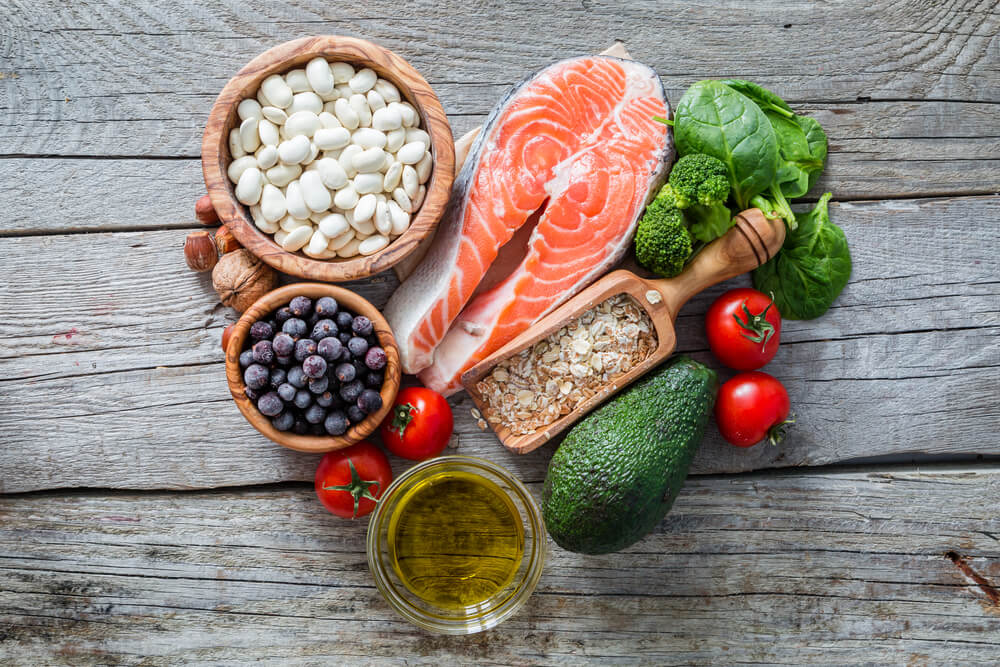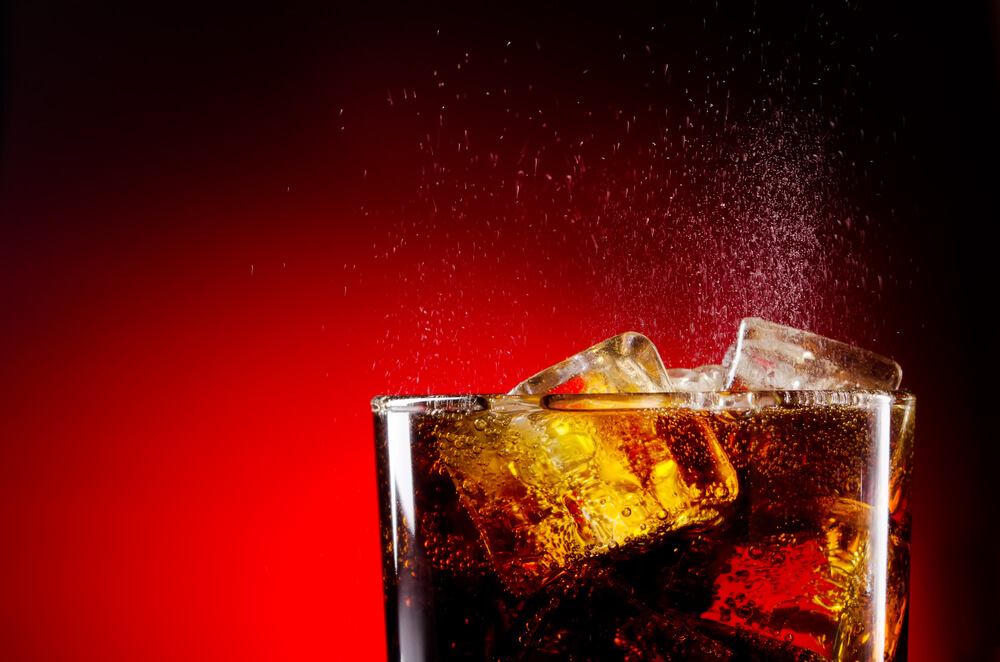We all have some sort of a diet. Sure, we might not dub it by name or refer to some celebrity for what we’re supposed to eat and what food is now perceived as bad for us, but we all diet.
For those of us who are looking for the best way to build muscle, cut fat and improve our bodies we typically have a stricter diet than others.
And, until scientists perfect the pizza diet, we’ll be constantly searching for one that not only tastes good (or at least tolerable) but also provides us with the desired results we’re looking for. One diet you may have come across in recent months is known as the cardiac diet.
Chances are, you at least have some idea as to what it involves, but even if you don’t, we’ll fill in all the questions you have with an abundance of answers.
Just keep on reading.
What is the Cardiac Diet All About?
As the name suggests, the diet is all about strengthening your heart.
It is designed to cut the problem foods out of your diet in order to keep your heart pumping blood through your body (and your arteries free of harmful plaque). Basically, this diet is designed for anyone who has a family history of cardiac problems, heart disease, stroke or who simply has higher than desired cholesterol.
The exact meal plan and specifics to the cardiac diet may differ depending on what book you pick up or website you land on.
However, most share similar information. For starters, sodium is evil. This is something the diet looks to cut out as much as possible. In reality, this is something you should try to do anyway. Sodium, even if you are a healthy individual, causes your body to retain water and can eventually lead to problems further on down the road.
Even if you are perceived as a healthy individual, have a great body and live an active lifestyle with quality diet, you may not even realize what is going on inside of your body. Sodium build-ups can strike anyone, regardless of body type, age or gender.
It is just another reason why you need to schedule an annual physical with your doctor, just to make sure everything is on the up and up (American Heart Association, 2017).
How the Cardiac Diet Can Help Your Heart
The basis of the cardiac diet is to help you get rid of undesirable food products.
As mentioned above, sodium is the main culprit to an assortment of heart and cardiovascular problems (especially for those individuals who prefer to sit on the couch while mowing down on salt and vinegar potato chips). For starters, while on the diet you’ll target keeping your sodium intake under 2,000 milligrams per day.
The next target group is fat. Fat often receives a bit of a black eye. If you are a regular at the gym, both for cardio and for weight lifting exercises, fat can be an excellent source of energy (as long as you stick to the good fats found in food like avocados and olives). With the cardiac diet though, just about all fats are targeted, so total calorie intake should be limited to around 25 to 35 percent from fat. No more than seven percent of this should stem from saturated fat, and less than one percent should come from trans fat (while you should maintain some levels of healthy fat in your diet, do what you can to limit saturated and trans fats) (WebMD, 2016).
High cholesterol foods is another problem area you’ll be cutting out while on the cardiac diet. The goal is to cut your intake to around 200 milligrams per day. If you’re a fan of eating cooked pork brains we already apologize as you’ll have to cut it out of your diet completely (four ounces of pork brains contains 2,892.3 milligrams or 860% of your daily cholesterol)(Eat This Much, 2017).
Who Should Consider the Cardiac Diet
In reality, anyone can and should consider the cardiac diet. This isn’t just some easy weight loss diet where you eat one food item over and over again (always avoid these diets as you simply can’t sustain yourself on one and only food item for long). There is a general purpose to the diet. If you have high cholesterol you can see results from the diet over time. So if you do suffer from any kind of heart or cardiovascular condition this is the diet for you.
But what if you’re looking to put on muscle size or shred away the fat?
You can do that with this diet as well. Because your aim with the cardiac diet is to remove sodium, fats, and cholesterol, it is essentially built for cutting weight and avoiding water retention. Plus, lean meats and proteins are perfectly fine in this diet, so if you want a muscular, fit and toned body, this really is a great option.
Who Should Avoid the Diet
You know that girl you dated once who you could swear didn’t have a heart?
Well, she probably doesn’t have much need for a cardiac diet. All kidding aside though, there really isn’t anyone who shouldn’t, at the very least, consider this diet. If you are someone who trains for extreme athletic activities, such as marathons, triathlons, Iron Man competitions and others you’ll likely need more calories, carbs, proteins and fats for energy than you can possibly muster out of this diet while staying within the established dietary limits for sodium, fat, and cholesterol.
Outside of this though, most people can and should at least consider the diet.
What Should You Eat On The Cardiac Diet?
Hopefully, you like fruits and veggies. You’re going to be eating a ton of them. The diet doesn’t put you on any kind of calory restriction. Just a sodium, fat and cholesterol restriction.
This makes fruits and veggies perfect for you. Of course, you’re going to find natural sugars and carbs in these foods (especially fruit), but you’re free to indulge yourself here. If you had to identify the top veggies for your diet though, it would include mostly items of the leafy green variety.
Some top examples include:
Arugula, spinach, bok choy, broccoli, asparagus, bell peppers, tomatoes, carrots, and cauliflower.
The next aspect of your diet to consider is fiber. Fiber is an important part of any deity, yet most people do not consume enough. The health benefit of fiber is that it sticks to sugars, carbs, and fats, preventing some of these items from being absorbed into your body. Fiber also helps you feel fuller, longer, which in turn allows you to cut down on a number of calories you consume.
When visiting your parents, have you ever seen them eating just bowl after bowl of boring oat meal?
If so, they probably told you it is because of their cholesterol. Oatmeal is one viable food to include in your diet, although you can consume oats in different ways (and not just in an overly watered down oatmeal soup inmates in Oranges is the New Black wouldn’t touch). In general though, when it comes to consuming fiber, you’ll find this in foods like:
Ground flaxseed, oats, berries, and beans.
Fatty Acids is a must for your diet. Fatty acids can help slow down plaque growth in your arteries. An Omega-3 fatty acid supplement is a great way to start with this, but it isn’t the only way to consume it. There are some great foods out there that come packed with fatty acids. Some of these foods include:
Ground flaxseed, chia seeds, hemp seeds, salmon, walnuts, salmon, tuna, sardines, and herring.
As you can see, most of these food items are low in calories and fat.
You’ll also find many of the food items can be combined rather easily. You know that oatmeal your parents tried to choke down?
They could have made it instantly better by adding some berries and flaxseed to it. Flaxseed is also a great item for a workout diet, so even if you decide to not try out the cardiac diet, you should look to include flaxseed in your diet at the very least (most of these foods can be included in a diet to make it healthier).
Foods To Avoid On the Cardiac Diet
Alright, so you know the foods you should add to your diet, but what kinds of foods should you avoid?
Chances are, you probably already have a good idea. Anything processed, deep fried or coated in sugar needs to be dropped from the routine (sorry doughnut lovers). Anything heavy in trans and saturated fats needs to be kicked to the side as well. Be careful when reading the front food label as well. There are going to be foods that state “trans fat-free” but in fact contain half of a gram of fat. Half a gram of trans fat here or there can really add up throughout the course of a day.
Anything processed, deep fried or coated in sugar needs to be dropped from the routine (sorry doughnut lovers). Anything heavy in trans and saturated fats needs to be kicked to the side as well. Be careful when reading the front food label as well. There are going to be foods that state “trans fat-free” but in fact contain half of a gram of fat. Half a gram of trans fat here or there can really add up throughout the course of a day.
So do yourself a favor and really look into the rear label to see what is in your food.
Now, there are going to be some websites and services out there that tell you to completely cut out peanut butter. If you’re lifting or looking for fast energy, you already know peanut butter is an excellent source.
So should you cut it out completely?
Not exactly. This is where reading the label is important. Yeah, if you’re a Jiffy fan or go for the Peter Pan peanut butter, you’ll need to stop (generally speaking, any food with a cartoon character on it is not going to be great for your diet, no matter how much we love Count Chocula.
However, there are some peanut butter out there that are good for you. Diet books and websites will say to cut it out because of the “partially hydrogenated oils.” That is bad for a cardiac diet. Instead, look for a label that just says “peanuts” as the only ingredient. You’ll likely need to go to a health food store where they press their own peanuts, but you don’t need to cut it out.
You can also substitute it with walnut or almond butter (as long as the nut is the only ingredient).
Meal Ideas For Cardiac Diet
Now that you know what you can and cannot eat, what kind of meals should you focus on throughout the week?
Here are a few suggestions.
For breakfast, you can eat egg whites with an avocado, or an omelet with your favorite veggies.
Want toast?
Go with a slice of 100% whole wheat. You can also have loaded oatmeal with the seeds and berries.
For lunch, avocado tuna salad is great, as is a turkey burger (again, stick with 100% whole wheat breads) low sodium bean chili or a chicken avocado sandwich.
As for healthy dinner ideas, you first need to start by kicking butter. Yes, you often need to cook with some sort of fat, but avoid butter and go either with an extra virgin olive oil or some sort of cooking spray (such as a coconut oil spray).
From there, turkey meatballs, a baked chicken or a fish with asparagus can work wonders. While salmon is recommended you can’t go wrong really with any fish (as long as the word “stick” isn’t’ included in the title).
As long as you stick with the different food items mentioned above, just about anything you eat is going to be great throughout the day (Cooking Light, 2017).
Conclusion
The cardiac diet, like most other diets, is not for everyone.
If you currently have heart problems, have a family history of heart disease or the heart pressure machine at CVC really freaked you out with its higher-than-normal readout, this may be the right diet for you. Before starting on any kind of diet always make sure to consult with your doctor ahead of time.
However, when it comes to strengthening your heart and getting your cholesterol back under control (and keeping it there), the cardiac diet may just be the perfect dietary plan for you.
-Terry Asher
Terry Asher
Latest posts by Terry Asher (see all)
- Better Family – Product Review Liquid Daily 2 oz - Dec 16, 2024
- Post-Workout Recovery: The Key to Optimal Performance - Nov 25, 2024
- Pre-Workout Supplements – Everything You Need To Know - Nov 18, 2024
















Your post is very good and meaningful. How long will it take you to write and post? thank you for sharing
I am so pleased with how this article was presented. I enjoyed every bit of information I read here.